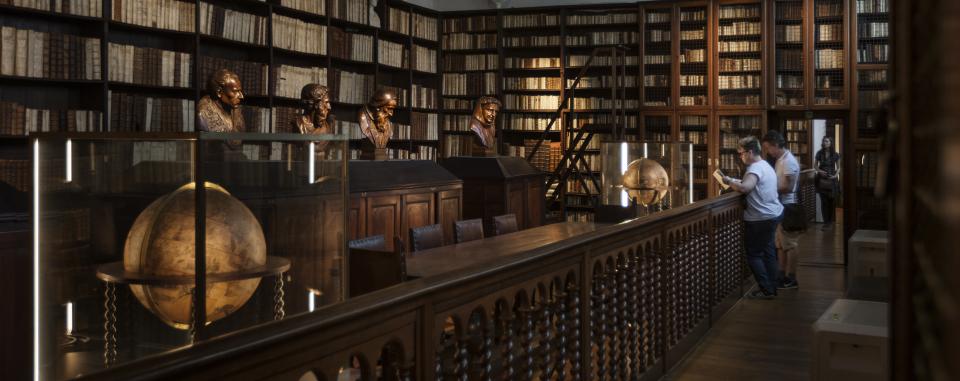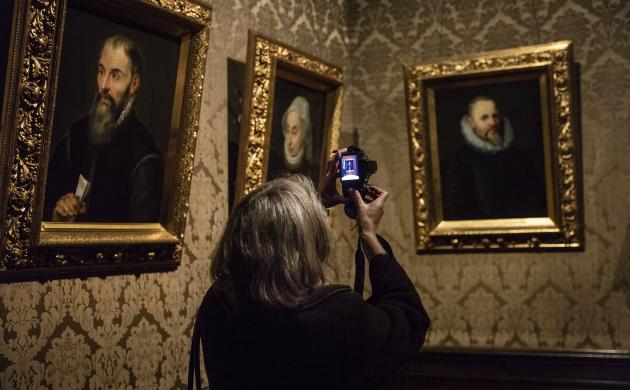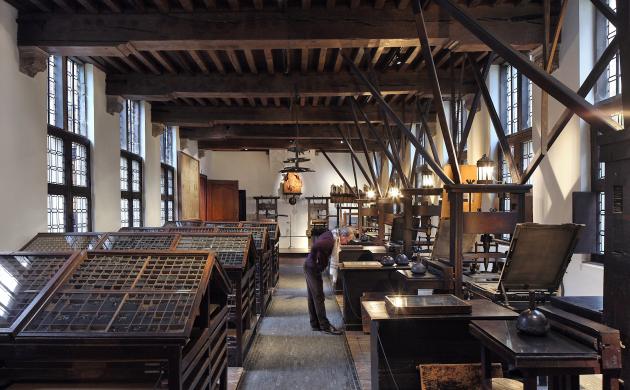The Great Library
The library is still organised today like a private humanistic library of the 17th century, with high shelves filled with books arranged according to size, lecterns, globes and busts. The wooden busts on the lecterns represent saints and popes, while the plaster busts on the bookshelves show the heads of Greek and Roman scholars and emperors.
How it developed
In late 1563, Christophe Plantin purchased a first set of books ‘pour le service cotidien ou futur de l'imprimerie’ (‘for the everyday or future use of the press’). Plantin also bought manuscripts and incunabula so that he could republish certain works himself, as well as publications of competitors and acquaintances. These manuscripts formed the basis for the Officina’s working library. They were useful in the preparation of new textual editions of the Church fathers and Greek and Roman authors. They were only used by the proof-readers. In this sense, the library belonged to the printing business. Plantin himself would rather sell out the entire print-run of his own editions than keep a single copy.
The largest collection of Officina Plantiniana editions
It was only Balthasar I who further expanded the humanistic private library. His successors continued this process until around 1700, when further growth ceased once again. It is mainly since 1876 that the museum’s book holdings have increased substantially. Successive curators have gone to considerable lengths to acquire all Plantin and Moretus editions.




